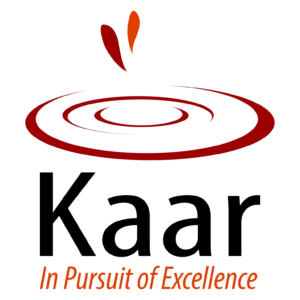For decades, energy-intensive commodities sectors such as paper and packaging have worked to improve process control, resulting in superior product quality while using less energy. This would allow them to save money while also maintaining a better atmosphere. Thus, to manage production and verify or anticipate product quality, a variety of concepts and instruments were developed. Though this strategy worked to some extent, it had its limitations.
By focusing on vision 2025, a significant portion of the value, reputation, and distinctiveness of the paper and packaging industries will be taken to a higher level. And the services provided by them will be built around by highly customizable items that are enhanced with digital information. Thus, as a result, larger lot sizes, process integration, and automation will all be required. But have you ever wondered how it can be accomplished with an Intelligent ERP system? If you’re curious to know about the answer, keep reading the blog until the end.
Strategic Priorities for Paper and Packaging Companies
The importance and values of Digital Transformation have been recognised by leading paper and packing companies. Thus, they are concentrating on five strategic priorities outlined below in order to transform their organization into an intelligent enterprise.
- Achieve Customer Centricity
- Connect and Automate Enterprises
- Run Smart Factories and Digital Networks
- Support Value-Added Services and New Business Models
- Build a Responsible and Sustainable Business
In order to achieve this, Intelligent technologies embedded in RISE with SAP framework acts as a key-value contributor to enabling paper and packing companies to become intelligent enterprises. Adapting to this enables your organization to redesign entire business models, processes, and products by driving enterprise digitalization through product development.
Building a Responsible and Sustainable Business
Globally, we are heading toward a purpose-driven economy. Consumers, employees, suppliers, and investors are all changing their minds about the importance of firms delivering on their mission and acting ethically in the face of climate change. Thus, an intelligent ERP system keeps employees safer and mitigates risks.
To better understand this, let’s consider there are two businesses where:
- Company A uses a non-SAP ERP system
- Company B uses an SAP-ERP system
As Company A’s entire business structure is governed by a non-ERP system, these were the pain points faced by them:
- Analysis of event data using out-of-the-box software is a tedious process.
- Had issues with analytics that aren’t linked to real-time incident data.
- Required multiple reports to track and analyse environmental compliance across the company.
- There is no simple way to identify or quantify dangers for a location.
- Reporting an incident was difficult.
As a result, insufficient integration of their traditional system resulted in a high involvement of manual processes.
Now let’s see about Company B, which uses an SAP-ERP system where:
- Advanced analytics, simplified EHS processes, and dedicated software helps health and safety administrators act quickly.
- Had advanced analytics for analysing accidents, near misses and other safety data such as asset, geographic, weather and other IoT data.
- Environmental data records are graphically monitored at regular intervals for various compliance situations with the applicable compliance limitations.
- Approval, replacement or invalidation of the recorded values of environmental data records were possible.
- Had insights into chemical management applications with all the required information needed by them.
- The process for identifying risks and assigning applicable safety measures for risk mitigation is simplified.
- Using IoT technology, issuing proactive alerts to workers in order to avoid mishaps was found effective.
Overall, Company B’s Intelligent ERP system [RISE with SAP Package] assisted them in keeping their employees safe and mitigating EHS risks.
Top Value Drivers
The major value drivers in the paper and packaging companies post successful deployment of SAP S/4HANA are:
- Enhanced security
- Time and money are saved
- Employee satisfaction and engagement have improved
(Note: Data was taken from SAP’s statistics)
Now you may be asking, “How can RISE with SAP help us?”. Here are the primary business capabilities they offer to assist you in reaching your objectives:
- Address rising customer, investor, employee, and societal expectations.
- Ensure the health and well-being of employees and suppliers by providing a safe working environment.
Conclusion
To conclude, using SAP software for paper and packing companies helps you gain competitive insights into your operations, increasing efficiency and agility while simplifying operations from procurement to manufacturing, order administration, distribution and transportation.
Own your tomorrow with a guided journey and outcome driven practices of RISE with SAP. To know more about the industry-specific solution, do get in touch with us!
